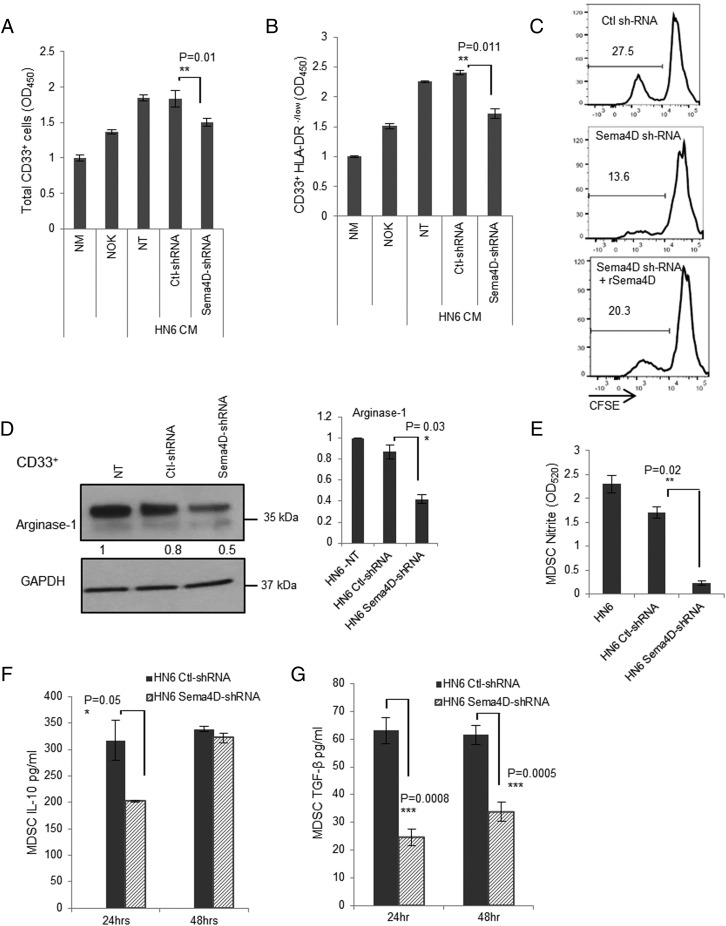FIGURE 6.
HN6-secreted Sema4D induces production of immune-suppressive mediators by MDSC. (A) Sema4D promotes proliferation of total myeloid cells. Bulk CD33+ cells cultured in HN6 control or Sema4D-shRNA conditioned medium (CM) for 24 h were analyzed using the WST-1 proliferation assay. (B) Sema4D promotes proliferation of CD33+HLA-DR−/low cells. CD33+HLA-DR−/low cells were sorted using magnetic beads and analyzed by WST-1 proliferation assay. All readings were normalized to cells growing in NM. (C) Reconstitution of HN6 Sema4D-shRNA CM with human recombinant Sema4D rescues CD33+HLA-DR−/low MDSC proliferation. CD33+HLA-DR−/low cells labeled with CFSE were analyzed by FACS. (D) Sema4D inhibition in HN6 decreases arginase-1 expression in myeloid cells. CD33+ cells were cultured in nontransfected (NT), Ctl-shRNA, or Sema4D-shRNA HN6 CM for 24 h and then analyzed by Western blot for arginase-1 expression. GAPDH served as a loading control. Densitometric analyses included for Western blot data were determined using ImageJ. (E) Sema4D inhibition in HN6 decreases NO production by myeloid cells. HN6 Sema4D-shRNA CM inhibits nitrite production by myeloid cells. Total CD33+ cells were cultured in CM from HN6 Ctl-shRNA or HN6 Sema4D-shRNA for 72 h, and then the media were collected to detect the nitrite concentration using Griess reagent. (F) CD33+ cells were cultured in HN6 Sema4D-shRNA or Ctl-shRNA CM, and cytokine production was assessed by ELISA. Knockdown of Sema4D results in a decrease in IL-10 production by CD33+ cells. (G) A reduction in Sema4D results in a concomitant decrease in TGF-β production by CD33+ cells. Data are shown with background levels of cytokine subtracted to demonstrate myeloid cell–specific cytokine production. CM, conditioned medium; NT, nontransfected.

